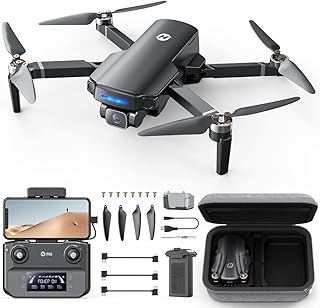The Rise of Drones: An In-Depth Look
Drones, once relegated to the realm of science fiction, have rapidly become ubiquitous in our modern world. Their impact is felt across diverse sectors, ranging from military operations to recreational activities, and their influence is only expected to grow. This in-depth look explores the rise of drones, examining their history, applications, benefits, challenges, and future potential.
The History of Drones:
- Early Beginnings: The concept of remotely controlled aircraft dates back to the early 20th century. The first unmanned aerial vehicles (UAVs) were developed for military purposes, primarily for reconnaissance and target practice.
- World War II: Drones saw significant development and deployment during World War II, with the US and UK utilizing them for aerial photography and bombing missions.
- Post-War Era: The Cold War fueled further advancements in drone technology, with both sides investing heavily in unmanned aircraft for surveillance and reconnaissance.
- Modern Era: The late 20th and early 21st centuries witnessed a surge in drone development, driven by technological advancements in areas such as miniaturization, GPS, and computer vision.
Applications of Drones:
Drones have revolutionized countless industries, with their applications ranging from:
- Military and Law Enforcement: Surveillance, reconnaissance, target identification, bomb disposal, and search and rescue operations.
- Agriculture: Crop monitoring, precision spraying, livestock management, and environmental analysis.
- Infrastructure Inspection: Power lines, bridges, pipelines, and other critical infrastructure can be inspected safely and efficiently.
- Delivery and Logistics: Package delivery, aerial photography, and emergency response.
- Media and Entertainment: Filmmaking, aerial photography, and live event coverage.
- Research and Development: Environmental monitoring, scientific data collection, and disaster relief.
Benefits of Drone Technology:
- Cost-Effectiveness: Drones are often more affordable than traditional aircraft, reducing operational costs.
- Increased Efficiency: Drones can complete tasks faster and more efficiently than traditional methods.
- Enhanced Safety: Drones can access dangerous or hazardous environments, keeping humans out of harm's way.
- Improved Accuracy: Drones can achieve higher accuracy and precision in tasks like spraying and surveying.
- Data Collection: Drones gather valuable data for analysis and decision-making across industries.
Challenges and Concerns:
- Privacy and Security: Drones raise concerns about privacy violations and potential misuse for surveillance or illegal activities.
- Safety and Regulations: Ensuring the safety of drones and establishing clear regulations are crucial for responsible integration.
- Ethical Considerations: The use of drones in warfare and potential civilian casualties raises ethical dilemmas.
- Cybersecurity: Drones are vulnerable to hacking and cyberattacks, necessitating robust security measures.
- Job Displacement: The automation brought by drones may displace jobs in certain sectors.
The Future of Drones:
The future of drones appears promising, with advancements in artificial intelligence, autonomous navigation, and battery technology driving further growth. We can expect to see:
- Increased Autonomy: Drones will become more autonomous, capable of navigating complex environments and making decisions without human intervention.
- Enhanced Capabilities: Drones will incorporate advanced sensors, payloads, and software to perform more complex tasks.
- Wider Applications: Drones will find new applications in healthcare, education, and other emerging fields.
Conclusion:
The rise of drones is a transformative technological development with vast potential to revolutionize various industries and aspects of our lives. While challenges and concerns exist, responsible development and regulation are essential for maximizing the benefits and mitigating the risks associated with drone technology. As drones continue to evolve, their impact on society will only grow, shaping our future in ways we are only beginning to imagine.


